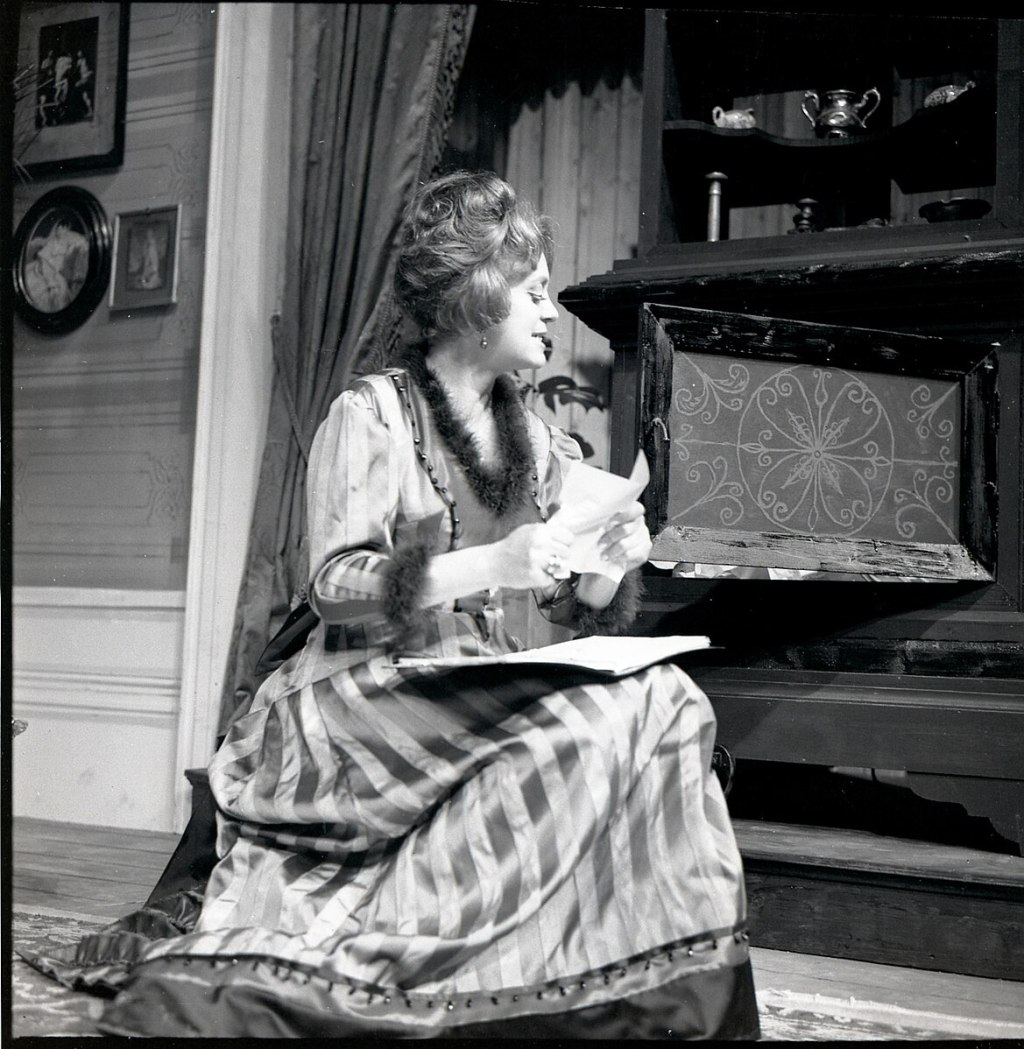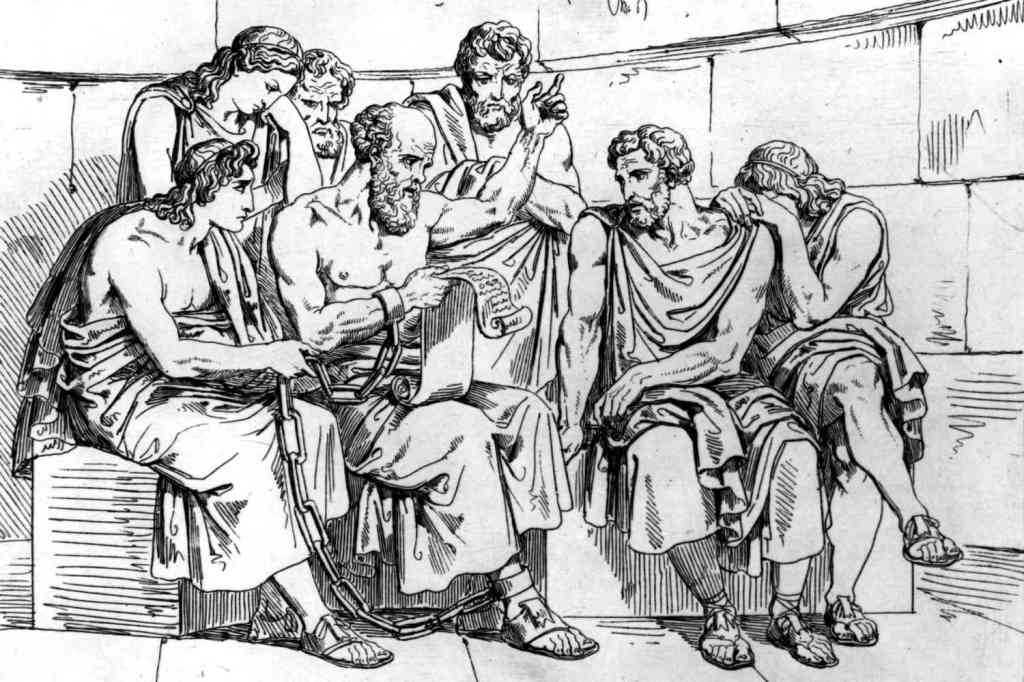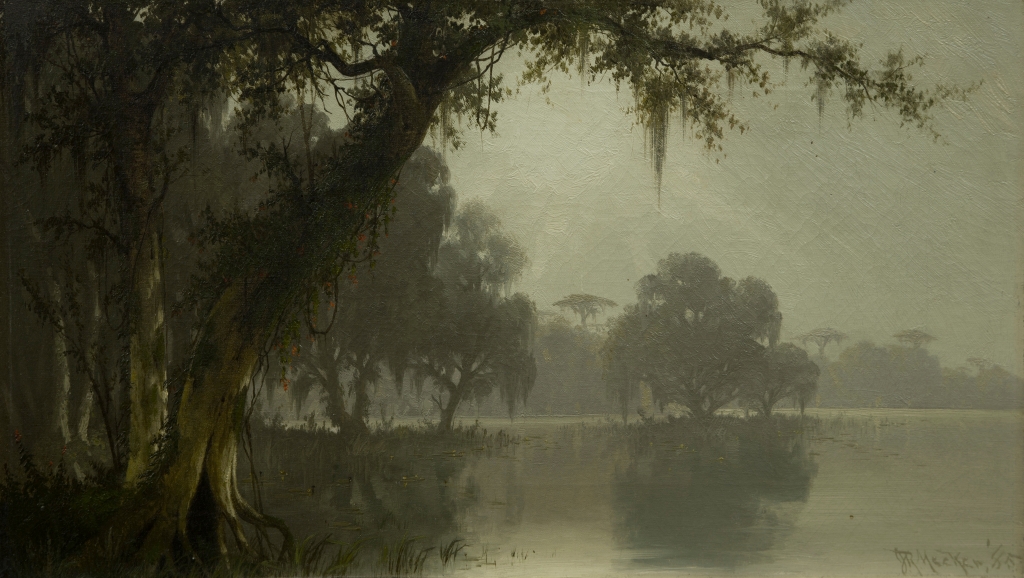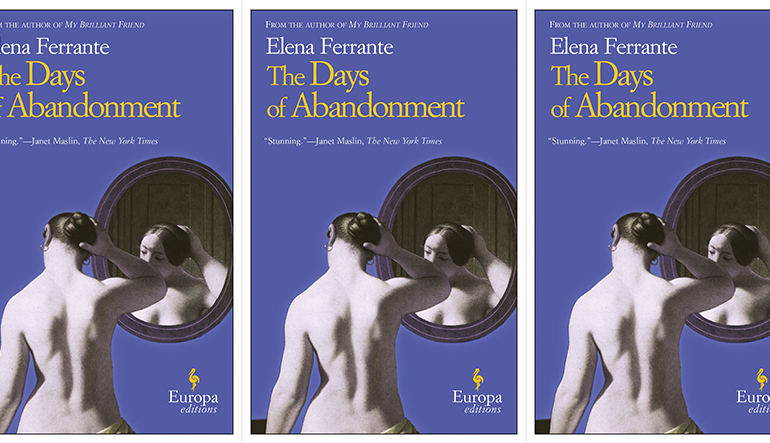Henrick Ibsen’s 1890 play, Hedda Gabler (first performed in Munich in 1891), provides us with not one but with two academic characters: the new husband of the eponymous Hedda Gabler, George Tesman, and his rival, in academia and in love, Eilert Lovborg. These men, despite their shared occupation as scholars, are as different as two people can be. The contrast between them relies on two well- worn archetypes of the academic in fiction: the socially inept bookworm and the erratic, overly emotional creative genius.
Hedda Gabler’s new husband, George Tesman, is comedically bookish with little in the way of common sense or social acumen. He is described as:
a middle-sized, young-looking man of thirty-three,
rather stout, with a round, open, cheerful face,
fair hair and beard. He wears spectacles, and is
somewhat carelessly dressed in comfortable indoor
clothes.
His “stout” physique, spectacles, and “comfortable indoor clothes” suggest his lack of physicality and vitality. He is at home indoors, reading books, and has little inclination to do much else. The play begins with him and his new wife recently returned from their wedding tour and moving into their new home. His exuberant aunt is the first to welcome him back and she is keen to know if he has any news on a potential first child. Of course, she doesn’t say this quite so explicitly and poor Tesman thoroughly misses her meaning, so focused is he on his research. When his aunt hints that he may soon have a use for the spare bedrooms in his new home, he replies: “Why of course you are quite right, Aunt Julia! You mean as my library increases—eh?” Our first impression of him is of a pleasant but foolish man so preoccupied with his research that he can think of little else.
We are left to wonder, even, how much attention Tesman paid to his new wife on their honeymoon. His main recollections of his time away appear to be of his research. His aunt comments on their “fine long wedding tour”, insinuating that his marriage may have been blessed with amorous beginnings. Tesman’s reply, however, throws cold water over that assumption:
Well, for me it has been a sort of tour of research
as well. I have had to do so much grubbing
among old records—and to read no end of books
too, Auntie.
This is particularly surprising as Tesman’s new wife is a celebrated beauty, and a woman of high social standing. He has married far above himself, as is clear in the obsequious and wonder-struck attitude of his aunt towards Hedda. Despite this, it appears that Tesman is all but immune to his new wife’s charms. He is enthusiastic to have secured her as a wife and keen to provide what he supposes are her wants and needs but he doesn’t seem to know her well enough to succeed in that endeavour. We learn, for example, that the house he is renting on the basis of Hedda’s desires is not actually something she particularly cares for. It is clear that Tesman is unaware of how to be a suitable husband, particularly for a woman like Hedda.
As the play goes on, Hedda complains often about how bored she is with her husband being always at his books and she refers to him dismissively as a “specialist”. This is not meant as a compliment but as a criticism of his myopic interests and subsequent poor society. Eilert Lovborg, in contrast, is anything but boring. Indeed, he is in every way Tesman’s opposite:
slim and lean; of the same age as TESMAN, but
looks older and somewhat worn-out. His hair and
beard are of a blackish brown, his face long and
pale, but with patches of colour on the cheeks. He is
dressed in a well-cut black visiting suit, quite new.
He has dark gloves and a silk hat. He stops near the
door, and makes a rapid bow, seeming somewhat
embarrassed.
Lovborg has lived more fully in his time on earth, and not in a way that has always been pleasant. He has seen and experienced more of the world and its dangers and disappointments, and that experience is written in his bearing and countenance. In contrast with Tesman’s affable openness, Lovborg is awkward and ill at ease, carrying his darker thoughts and past shames always with him. This past is connected with Hedda through their former acquaintance: before her marriage, Hedda was his close confidant, keenly listening to the sordid accounts of his debaucherous escapades. Apparently reformed, Lovborg has been living with a Mrs Elvsted and her husband, working as a tutor to the husband’s children and rebuilding his life following a public descent into alcoholism and womanising. These darker traits of Lovborg’s character are romanticised by Hedda who likes to imagine him as a Dionysian reveller “with vine-leaves in his hair”, pursuing the life of moral freedom she herself desires. In his time away from the corrupting influences of the city (and, presumably, of Hedda), Lovborg has become teetotal (though he has also begun what we may assume is a sexual relationship with the married Mrs Elvsted), and has managed to write two books in the space of one year. The first of these is a recently published work that has achieved great success (due, according to Lovborg, to its simple reflection of what people want to hear), the second is an unpublished manuscript that reaches prophetically into the future of the discipline.
Tesman’s responses to these two texts are telling. Upon reading the successful published work he says: “I think it shows quite remarkable soundness of judgment. He never wrote like that before.” This sound judgement that Tesman finds cause to praise is exactly that which Lovborg disparages as a mere reflection of what the masses want to hear. Tesman, despite his studiousness, is revealed to have exactly those pedestrian tastes Lovborg scorns and has sought to exploit. On the experimental text, of which Lovborg declares: “For this is the real book—the book I have put my true self into”, Tesman initially exclaims: “How odd now! I should never have thought of writing anything of that sort”. Again, this exposes Tesman’s limitations as a scholar. He lacks the creative imagination to even conceive of a book such as the one Lovborg has written. When he finally gets to read this unpublished manuscript, however, Tesman is in raptures:
Oh, Hedda, you can’t conceive what a book that
is going to be! I believe it is one of the most
remarkable things that have ever been written.
Fancy that!
While Tesman is presented as a slightly buffoonish and naive character, and a pedestrian though committed scholar, we are nevertheless expected to accept his judgement here and appreciate that what Lovborg has produced is a true work of note: something a scholar like Tesman could never produce.
Tesman and Lovborg demonstrate the two poles of the academic character-type as it is often represented in fiction. Tesman is the plodding, bookish type, bumbling but pleasant, with a stunted understanding of adult relationships; Lovborg is the messy, disorganised, broken genius with an appetite for self-harming overindulgence. Within the world of the play, however, they are little more than the playthings of the bored, manipulative Hedda Gabler: deeply disturbed and smarter than them both. Their role as scholars and academics serves mainly to foreground Hedda’s greater mastery and greater sense of the universal and sublime, however contorted. For this reason, perhaps, they are more stereotypes than rounded characters. Yet that only renders their characterisations more useful for discussions of academics in fiction: they show us the unmediated assumptions people hold about those that enter the rarefied halls of the academy, and the picture is not flattering.




Leave a comment